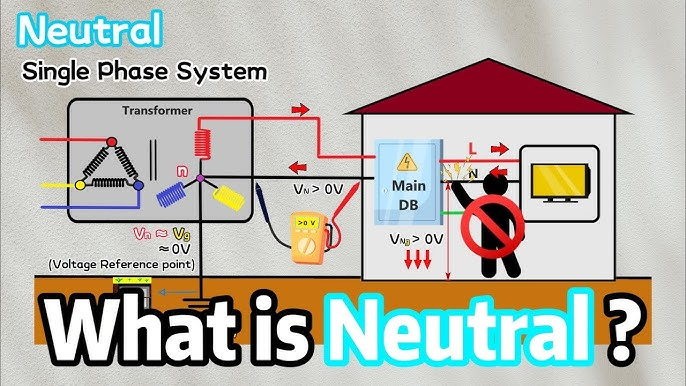Understanding the Role and Importance of Power System Neutral in Electrical Networks
The Power System Neutral plays a vital role in modern electrical engineering, ensuring stability, safety, and efficiency across generation, transmission, and distribution networks. Often overlooked outside technical discussions, the neutral is a foundational component of every balanced power system. It provides a return path for current, supports fault protection, and enhances the overall reliability of electrical infrastructure. Without proper management of the neutral connection, power systems would face serious challenges, including instability, equipment damage, and safety hazards.
As industries, utilities, and households become increasingly dependent on electricity, understanding how the neutral functions within power systems is essential. This article explores its significance, types of neutral grounding, applications, and the challenges associated with improper configuration.
Defining the Power System Neutral
In electrical networks, the neutral refers to the common return path for current in a three-phase system or the point of equilibrium in a star-connected arrangement. It is typically connected to the ground at one or multiple points, creating a reference voltage for the system. This grounding not only stabilizes voltages during normal operations but also provides a safe path for fault currents during abnormal conditions.
For alternating current (AC) systems, the power system neutral ensures that each phase voltage remains balanced relative to the earth. In distribution networks, the neutral conductor is essential for delivering single-phase loads while maintaining overall system balance. Without a properly managed neutral, fluctuations and potential differences could compromise both safety and operational integrity.
Importance of Neutral in Electrical Systems
The neutral in a power system serves multiple critical purposes. One of its primary functions is maintaining system stability by acting as a reference point for voltages. This helps in controlling phase-to-ground voltages and preventing overvoltage conditions during unbalanced loads.
Another significant role is safety. By providing a low-impedance path to ground during faults, the neutral allows protective devices such as fuses and circuit breakers to operate effectively. This prevents prolonged exposure to dangerous fault currents and minimizes risks of fire, electrocution, or equipment failure.
Furthermore, the power system neutral enables efficient distribution of power. In many electrical networks, particularly residential and commercial systems, single-phase loads rely on the neutral conductor to function correctly. Without it, only balanced three-phase loads could be supported, severely limiting system flexibility.
Types of Neutral Grounding Methods
How the neutral is treated in a power system depends on the grounding method chosen. Each approach offers specific advantages and is selected based on the nature of the network and its operational requirements.
In a solidly grounded system, the neutral is directly connected to earth, providing strong fault current paths and reliable operation of protection devices. This method is common in low-voltage networks and industrial facilities where rapid fault clearance is necessary.
A resistance-grounded system introduces a resistor between the neutral and ground. This limits the magnitude of fault currents, reducing stress on equipment and minimizing arc flash hazards. Such systems are widely used in medium-voltage industrial networks.
In reactance-grounded systems, a reactor is used instead of a resistor. This method controls fault current magnitude while maintaining system stability, often found in high-voltage applications.
There are also isolated neutral systems, where the neutral is not connected to the ground. These are used in specific scenarios to maintain continuity of supply, but they come with increased risk of overvoltages.
Neutral in Transmission and Distribution Networks
At the transmission level, the power system neutral is crucial for fault detection and stability. Grounding practices ensure that protective relays can quickly identify and isolate faults, maintaining reliability across long-distance power delivery. In distribution systems, the neutral conductor serves an additional purpose of carrying unbalanced currents from single-phase loads, ensuring efficient utilization of three-phase power.
Urban networks with mixed residential and commercial loads heavily rely on the neutral for balance. Rural electrification projects also depend on well-designed neutral connections, as long distribution lines can amplify the risks of voltage instability without proper grounding.
Challenges and Issues Related to Neutral Management
While the neutral is a stabilizing element, poor management can introduce significant challenges. Loose or damaged neutral conductors may lead to dangerous voltage fluctuations, posing risks to sensitive electronic equipment and household appliances. In unbalanced load conditions, the neutral carries excess current, which can cause overheating and losses if not properly sized.
Another issue is the rise of harmonics in modern power systems, especially with the widespread use of nonlinear loads such as computers, LED lighting, and variable frequency drives. Harmonics increase the current in the neutral conductor, sometimes exceeding the rated limits. This requires careful design and harmonic mitigation strategies to prevent failures.
Grounding practices also raise concerns. Inadequate or improper neutral-to-ground connections can compromise the effectiveness of protective devices, delay fault clearance, and increase the risk of shock hazards. Regular inspection, monitoring, and compliance with standards are therefore essential.
Future Outlook and Technological Integration
As smart grids and renewable energy systems expand, the role of the power system neutral is becoming even more critical. Distributed energy resources like solar panels, wind turbines, and battery storage introduce bidirectional power flows, increasing the complexity of neutral management. Advanced monitoring systems and digital relays are being developed to supervise neutral conditions in real time, ensuring reliability in modern grids.
Microgrids and hybrid energy systems also rely on optimized neutral grounding schemes to ensure safety and stability during both grid-connected and islanded operations. Emerging technologies, including artificial intelligence and predictive analytics, are expected to enhance neutral fault detection and improve preventive maintenance strategies.
Conclusion
The power system neutral is far more than a technical detail; it is a cornerstone of electrical stability, safety, and efficiency. By providing a return path for current, stabilizing voltages, and enabling effective fault protection, it underpins the reliability of power networks worldwide. From transmission grids to residential distribution, its role remains indispensable in maintaining seamless electricity supply.